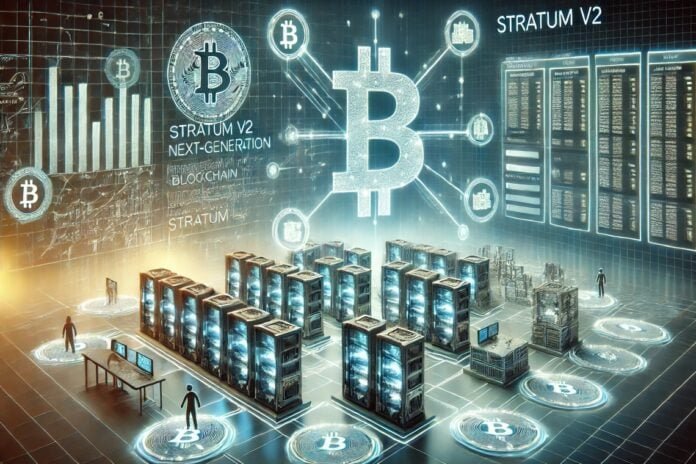DMND (“Demand Pool”) is preparing to radically transform the Bitcoin mining industry with the launch of the first Stratum V2-based mining pool.
This innovation offers miners greater control, security, and transparency, changing the traditional system where pool operators decided which transactions to confirm.
Now, miners will be able to build their own block templates and manage transactions directly, thus strengthening the decentralization of the Bitcoin network.

Summary
A turning point for decentralization and security in Bitcoin mining thanks to DMND
Alejandro de la Torre, co-founder and CEO of DMND, emphasizes the need to address the centralization of mining pools, an issue that, according to him, has plagued the sector for over a decade.
“It is essential that Stratum V2 becomes a reality,” he states, highlighting how this technology allows miners to directly control the block creation process.
With the debut of the first mining pool based on Stratum V2, DMND takes a monumental step towards a more decentralized Bitcoin.
Stratum V2 marks a profound evolution in the mining sector, introducing significant improvements in terms of privacy, security, and autonomy.
Unlike traditional pools, where transactions are selected by operators, Stratum V2 returns this decision-making power directly to the miners, ensuring greater fairness and transparency.
One of the crucial aspects of DMND is the implementation of end-to-end encryption. This prevents hashrate hijacking attacks and protects mining operations from potential interferences.
Making the system even more innovative is also SLICE. That is, a transparent and verifiable payment system, which eliminates hidden fees and ensures fair compensation for all participating miners.
In addition to the announcement of the launch, DMND confirmed that it successfully completed a funding round in the fourth quarter of 2024, led by Trammell Venture Partners.
According to Christopher Calicott, managing director of TVP, the mining pool sector has been characterized for too long by an unclear fee system and excessive centralization.
With the new infrastructure offered by DMND, both large publicly traded operators and independent miners will be able to actively participate in the decentralization of the Bitcoin network.
Having thus full control over the construction of the blocks and receiving payments in a more equitable and transparent manner.
This initiative not only enhances the autonomy of the miners, but also marks a fundamental step in strengthening the integrity and security of the Bitcoin blockchain.

How to participate in the new era of mining
Miners interested in contributing to the creation of the first Stratum V2 block can submit their application through the official DMND website. Registrations for the launch phase will remain open until March 28, 2025, with the deadline set for midnight (PST).
DMND marks the beginning of a new era for Bitcoin mining, offering a safer, more transparent, and decentralized alternative for miners of all sizes.
For more information about the project and its impact in the sector, you can visit their website and explore the advantages of Stratum V2 in Bitcoin mining.
